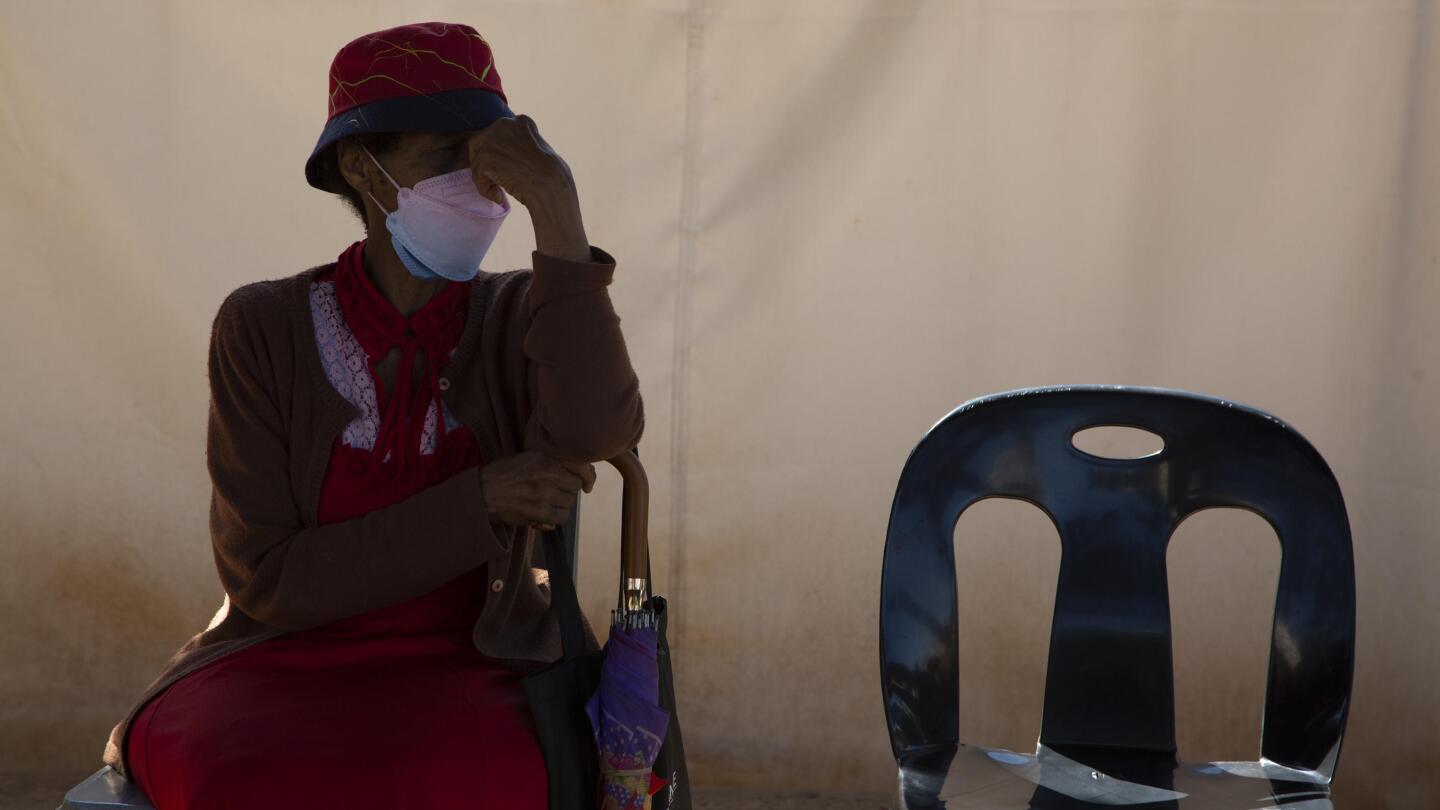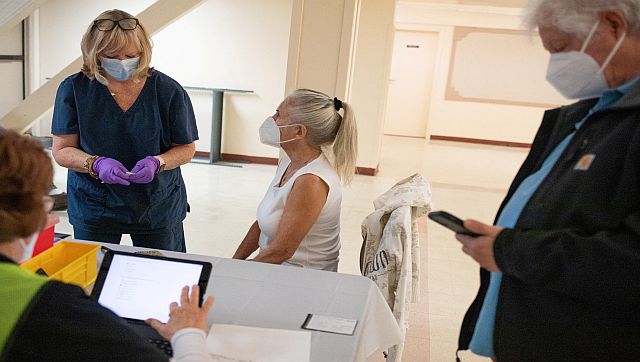
Omicron: How South African scientists discovered the variant and set off a global chain reactiony
CNNJohannesburg, South Africa CNN — In the early days of November, laboratory technicians at Lancet Laboratories in Pretoria, South Africa, found unusual features in samples they were testing for the coronavirus. “Our first thought was: There goes our quiet December and a Christmas break.” Three weeks later, what the South African scientists had stumbled across would be known worldwide as the Omicron variant of the coronavirus. Trevor Bedford, from the Department of Epidemiology at the University of Washington, said on Twitter that based on genomic analysis from Botswana and South Africa, “the Omicron variant likely arose much earlier than when it came to our notice, probably in early October.” Kristian G. Andersen, a virologist at the Andersen Lab in California, took a similar view, tweeting: “We can estimate that based on the diversity in sampled genomes and most estimates land ~mid October, so we believe it’s relatively young.” There was also a sharp increase detected in the viral load of wastewater in the Pretoria area at the very end of October and the beginning of November. Speaking to CNN’s Becky Anderson on Wednesday, Michelle Groome of South Africa’s Institute for Communicable Diseases said: “Our wastewater surveillance actually alerted us as relatively early to these cases in the Pretoria district.” But virologists acknowledge they are dealing with very preliminary information at the moment on the evolution and characteristics of Omicron. But that bulletin also notes that “South Africa, where Omicron was first detected, has experienced a recent sharp increase in the number of cases in multiple provinces, coinciding with the detection of the Omicron variant.” In the past fortnight, South Africa has gone from a weekly average of 290 cases per day to almost 3,800 daily cases.
History of this topic

‘Just like Omicron…’: Why are scientists paying more attention to new Covid variant?
Hindustan Times
Covid-19 Omicron sub-variant BF.7 won't lead to severe disease, expert's report
India TV NewsWith detection of Omicron sub-variant in India, medical experts sound an alarm, insist on adhering to COVID-19 protocols
The Hindu
Next Covid-19 Strain May Be More Dangerous, Says New Study
News 18
After a year, omicron still driving COVID surges and worries
Associated Press
Ex-AIIMS boss cautions against new Omicron variants, says situation is different
Hindustan Times
Covid-19: Here’s all we know about Omicron variants and their spread in India
Hindustan Times
Omicron’s staying power is key to mild winter as cases rise
Hindustan Times
You may have been spreading the omicron variant without knowing it
Salon)
COVID-19: NRI on Gujarat visit tests positive for Omicron sub-variant BA.5
Firstpost)
Omicron BA.4 is here: What is the sub-variant and can it cause another COVID-19 wave?
Firstpost
South Africa in new surge of COVID from versions of omicron
Associated Press
Delhi: Omicron found in 97% samples taken from Covid victims from Jan to March
Hindustan Times
Data | Global COVID deaths at a low as new threats loom
The Hindu)
Continuing to monitor 'several descendent lineages' of Omicron COVID-19 variant, says WHO
Firstpost
China Finds New Iteration of Omicron Variant as Covid-19 Tally Crosses First Wave Peak
News 18
Scientists worry virus variant may push up COVID cases in US
Associated Press
COVID: S Korea reports record cases as Omicron wave nears peak
Al Jazeera
What Omicron taught us about Covid-19
India Today
Cases of 'Deltacron' Covid Variant Found in UK Samples, Says Health Agency; Nation Monitoring Strain
News 18
Descendant Of Omicron Variant Detected In West Virginia
Huff Post)
Fast-spreading, heavily mutated Omicron variant detected in 57 countries, says WHO
Firstpost
How did Omicron evolve? Scientists explore theories relating to origins of COVID variant
India TV News
Cases plateauing in parts of India but omicron still surges
Associated Press
Is Omicron endgame of Covid? WHO chief warns of future variants
Live Mint
Omicron ’sub-variant’ BA.2 found in India: What we know so far
Live MintOmicron surge: Understanding the third wave of the COVID-19 pandemic in India
The Hindu
Omicron variant widely prevalent in AP’s six coastal districts
Deccan Chronicle
Is Omicron the end game of Covid-19? Study in South Africa may have an answer
India Today
Covid-19 pandemic nowhere near over, says WHO chief
India Today
Omicron variant Updates: Delhi logs 13,785 fresh cases, 35 deaths, positivity rate at 23.8%
India TV News
Omicron in South Africa Proved Less Fatal, Strict Vigilance Can Stop Community Spread of Future Variants
News 18
Omicron a 'deviant' from Covid pandemic progression script, says top virologist
India Today
Omicron a \'deviant\' from Covid pandemic progression script: Virologist T Jacob John
Deccan Chronicle
Omicron just a 'deviant', two pandemics might be going on side by side: Top virologist
India TV News
After six-week surge, Africa's Omicron-driven fourth pandemic wave flattens: WHO
India Today
India's genome sequencing strategy to be revised to see if Omicron behind hospitalisations | Exclusive
India TodayOmicron to become dominant strain: CCMB scientists
The HinduWA records four new cases of COVID-19 including one suspected of having the Omicron variant
ABC
As Third Covid Wave Hits India, a Seven-point Guide by Two Doctors to Tide over Omicron Crisis
News 18
Omicron exposes East-West divide on living with COVID
Al Jazeera
India's first Omicron death reported in Rajasthan: Union Health Ministry confirms
India TV News
Omicron infections likely to rise sharply, may peak by January end
India Today
Omicron accounts for 95% of new US cases: CDC
India TodayICMR approves India-made kit to detect Omicron
The Hindu
New Covid-19 variant ‘IHU’ discovered in France, has more mutations than Omicron
Hindustan Times
Can Omicron's ‘immunity’ end Covid-19 pandemic? Experts hint at ‘silver lining’
Hindustan Times
COVID: WHO sees growing proof Omicron causes milder symptoms
Al Jazeera
Omicron tally goes up to 17 in Andhra Pradesh
Deccan Chronicle
Omicron dampens new year celebrations amid COVID restrictions
Al JazeeraDiscover Related
















)

























